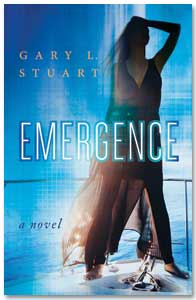The Ethics of Debunking Disinformation
It’s October—Halloween time. But November is close at hand—Politicians tricking, writers treating, readers getting scared, and editors debunking.
Once upon a time, before Trumpism, November was just plain old Election time. We had little need for debunking, even though there was plenty of bunk. Now, in what might be Trumpism’s waning time, we are in great need of debunking. By “we,” I mean both ends of the social media tape line—writers and readers.
This blog is prompted by an op ed in the Arizona Republic with a scary title. “Truth or Fiction? Five Steps to Avoid Getting Duped by Election Season Misinformation.”[1] Of course, there were tricksters, liars, scalawags, and perfidious politicos before Trump burst out of thin air in 2016. But those turned out to be the good old days when an entire political party didn’t bend ballots or make outrageously false claims the norm. The bad old days suddenly became the norm when truth became unnecessary.
The only known antidote for untrue political claims is to debunk them, one word at a time, sentence after sentence, with an eye on the truth and an ear to solid ground, not slippery with skull duggery. Misinformation travels as fast as tricky fingers can click save, and gullible eyes swing into focus.
The Arizona Republic identified two widely accepted experts on misinformation for help on how its readers could fact check information that has that odor, that sense, that oozy feeling of misinformation.[2] Rather than a traditional 12-step program, they built a 5-step program.
Step 1. Start with a gut check on your emotions. If you feel extremely angry, confused, or upset after reading or watching something, it could be because that article, video or photo was designed to make in-the-moment critical thinking harder. Pay attention to what evidence the author, creator or poster offers to assert their claim. A lack of evidence or a poster asserting evidence exists but not offering a clear citation or link is a red flag that means you should do check the facts.
Step 2: Gather some evidence. To begin debunking, start collecting evidence. Don’t rely on the source of the information; Instead, use a search engine to see if you can find other sources. Do “lateral reading.” If you see something that seems really weird, check other websites to see if anyone else is talking about it. If multiple trustworthy media outlets are reporting the information or you see peer-reviewed research that backs it up, the information is probably true. If you can’t find more than a handful of social media posts parroting the information, that likely means it isn’t accurate.
Step 3: Where is the post coming from? It’s important to think strategically and critically about information that you see in your social media feed. Understand what the potential motivation or agenda of a particular purveyor of information might be. Look at the name of the poster on social media and compare it to their actual username. Look at the date the account was created, any linked websites and the account bio or description.
Step 4: Is it a trusted source? The best way to debunk misinformation is to read widely and avoid falling into it in the first place. Find a variety of news sources that you trust. Reliable media outlets will name their sources. If a source is offered anonymity, a trustworthy media organization will disclose that in a story and explain why. Solid news outlets will disclose when an article or video is news, analysis, or opinion. Trusted news organizations will also include bylines on their articles and offer ways for readers, viewers, or listeners to get in touch with their journalists. They’ll follow a set of publicly posted ethical principles and guidelines to ensure their reporting is fair and accurate.
Step 5: Context and honesty matter. Information is not always entirely true or entirely false. Sometimes it comes in shades of gray, and there’s no exact checklist for determining truth. It’s not like if three characteristics line up, it’s therefore disinformation and if only two, or one, or zero of these characteristics are present, it’s therefore truth. Often, information is factually correct, but is simply presented without good context. It’s a byproduct of a fast-paced world. Our attention spans are such that we are not interested in context.
Misinformation is different from fake news. PolitiFact defines it. “Fake news is made-up stuff, masterfully manipulated to look like credible journalistic reports that are easily spread online to large audiences willing to believe the fictions and spread the word. There are eight well-known and oft-used types of fake news. Alternative/Alternate Facts – A different interpretation of facts, usually derived from a misinterpretation of reports or by focusing only on a subset of the available information. Clickbait – news that is promoted with dramatic or misleading headlines that do not reflect the content of the actual story. Disinformation – False or inaccurate information that is created to be deliberately deceptive. Fake/Hoax News – news that is fabricated with the intention of misleading or confusing readers. Mimic Websites – fake news websites that mimic the look of trusted news sources in order to fool readers into thinking a story is real. Misinformation – Information that is false or inaccurate, often spread widely with others, regardless of an intent to deceive. Misleading News – news stories that report quotes, images, statistics out of context, some of these stories can be old stories that are re-reported with a new misleading headline. Satire – fake and ironic news stories that are intended to be funny or entertaining.” [3]
The Center for Information Technology and Society at UC Santa Barbara, shortened to CITS, is one of the most reliable sources for debunking disinformation. It is an effective network of scholars dedicated to interdisciplinary research and education that seeks to understand and help shape the complex development, use, and social effects of information technologies. It uses cutting edge research across engineering, social sciences, and humanities through dynamic connections with academia, industry, and government.[4] It offers practical and available ways for readers to identify fake news and fact-checkers.
“Accompanying the increasing amount of fake news and misinformation online, there are numerous platforms on the web for authentication, verification, or fact-checking the truthfulness of news stories. The systems themselves are very useful. The limitations in their effectiveness in helping dispel fake news seem to come from their being under-used, and the section of our website on cognitive biases explains a lot about why people don’t take advantage of fact-checking systems. Nevertheless, many efforts have in fact been made and strategies have developed to assist us in distinguishing false information from the truth.”[5]
“The universe of “fake news” is much larger than simply false news stories. Some stories may have a nugget of truth but lack any contextualizing details. They may not include any verifiable facts or sources. Some stories may include basic verifiable facts, but are written using language that is deliberately inflammatory, leaves out pertinent details or only presents one viewpoint. “Fake news” exists within a larger ecosystem of mis- and disinformation. Misinformation is false or inaccurate information that is mistakenly or inadvertently created or spread; the intent is not to deceive. Disinformation is false information that is deliberately created and spread “in order to influence public opinion or obscure the truth.”[6]
One of my favorite writers, Ambrose Bierce, defined truth in 1914. “Truth is an ingenious compound of desirability and appearance. Discovery of truth is the sole purpose of philosophy, which is the most ancient occupation of the human mind and has a fair prospect of existing with increasing activity to the end of time.”[7] He also gave us a fine definition of politician in his book. “A politician is an eel in the fundamental mud upon which the superstructure of organized society is reared. When he wiggles, he mistakes the agitation of his tail for the trembling of the edifice. As compared with the statesman, he suffers the disadvantage of being alive.”[8]
[1] Sasha Hupka, The Arizona Republic, September 28, 2022
[2] Julie Smith of Webster University in St. Louis and Scott Ruston of Arizona State University in Phoenix.
[3] https://guides.stetson.edu/c.php?g=431404&p=4247861
[4] https://www.cits.ucsb.edu/fake-news/protecting-ourselves-fact
[5] Ibid.
[6](https://www.merriam-webster.com/dictionary/disinformation).
[7] “The Enlarged Devil’s Dictionary by Ambrose Bierce” Ernest J. Hopkins, Editor, Library of Congress Catalog Card Number 67-13971. At page 284.
[8] Ibid, at page 221

I am an author and a part-time lawyer with a focus on ethics and professional discipline. I teach creative writing and ethics to law students at Arizona State University. Read my bio.
If you have an important story you want told, you can commission me to write it for you. Learn how.






 I am an author and a part-time lawyer with a focus on ethics and professional discipline. I teach creative writing and ethics to law students at Arizona State University.
I am an author and a part-time lawyer with a focus on ethics and professional discipline. I teach creative writing and ethics to law students at Arizona State University.  My latest novel is Emergence, the sequel to Let’s Disappear.
My latest novel is Emergence, the sequel to Let’s Disappear.  If you have an important story you want told, you can commission me to write it for you.
If you have an important story you want told, you can commission me to write it for you.